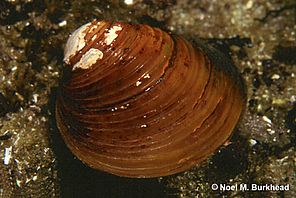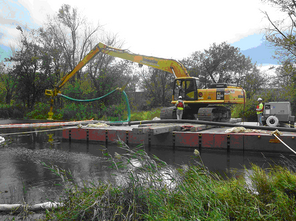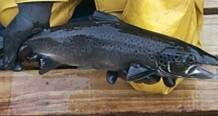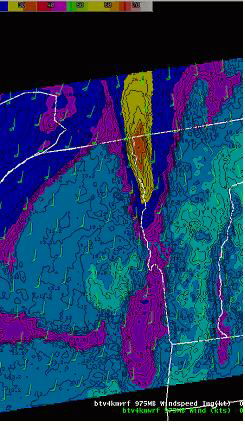Lake Ripples - September 2010
LCC's E-News Bulletin
New York Passes Important Phosphorus Legislation

New York State has passed a bill regulating the use of phosphorus by homeowners. As of January 1, 2012, homeowners and landscape contractors will not be able to apply fertilizer containing phosphorus to their lawns in the absence of a soil test that demonstrates a need for phosphorus or if a new lawn is being established. LCC recommends always getting a soil test before applying fertilizer since most soils in the Champlain Valley do not need the additional nutrients. Excess phosphorus runs off into our waterways. Retailers will still be able to sell phosphorus containing fertilizer, because of the exception, but they must provide signs about the dangers of phosphorus to fresh water systems. Additionally, fertilizer can not be applied within 20 feet of any water body; ten feet if a vegetative buffer has been established.
The fertilizer law is similar to legislation passed in Minnesota. Vermont does not have a fertilizer law though the Lake Champlain Committee has advocated for one and will continue to do so...<link learn news item external-link-new-window>MORE
Asian Clam Found in Lake George

The presence of a new exotic species, Asian clam, has been confirmed in Lake George, NY. Lake George drains directly to Lake Champlain via the LaChute River. The thumbnail-sized Asian clam, blamed for clouding Lake Tahoe in the High Sierras, had previously been found in the Champlain Canal in April 2008, but has not yet been recorded in Lake Champlain.
In appearance Asian clams and zebra mussels are quite different. Unlike zebra mussels, Asian clams have thick shells with prominent, raised ridges. They can grow to be up to an inch and a half in length, and have round, symmetrical shells. Zebra mussel shells are less round, and most native mussels are somewhat asymmetrical. Whereas zebra mussels attach to hard surfaces, Asian clams burrow into sediments, preferring sand and gravel. One similarity between zebra mussels and Asian clams is that they both have free-floating larval stages called veligers. The larvae of all native mussels attach to fish, using them to move from place to place...<link learn news item external-link-new-window>MORE
Barge Canal Superfund Site Gets A Repair

The underwater cap at the Burlington Barge Canal Superfund Site is being repaired to ensure that contaminants don’t migrate to Lake Champlain. The $3.5 million sand and silt cap, originally installed during 2003 and 2004, has been largely effective in preventing wastes that exist beneath the canal from moving. The pollutants are byproducts from a manufactured gas plant that converted coal to gas from 1895 through 1966. Coal tars, fuel oil, cyanide, ammonia, heavy metals and contaminated wood chips were routinely dumped in neighboring wetlands and the adjacent canal that had been built to serve area lumber yards in the 1800s. The 38-acre property bordering the lake has been a Superfund site since 1981. LCC was instrumental in developing a site remedy, creating an award-winning effort to engage citizens, scientists, environmental agencies and the businesses responsible for the waste (and the clean-up costs) in a multi-year effort to develop a solution. The parties formed a Coordinating Council that oversaw research and monitoring, investigated options, and collectively endorsed a clean-up plan protective of the environment and public health...<link learn news item external-link-new-window>MORE
Nature Note – Atlantic Landlocked Salmon

Landlocked Atlantic Salmon (adult male). Photo from NYDEC.
Landlocked Atlantic salmon head from Lake Champlain into tributaries to spawn during the fall. The main run of salmon usually extends from early September into mid-November with the heaviest runs in early October to early November according to the New York Department of Environmental Conservation (NY DEC).
Native runs of Atlantic salmon disappeared from Lake Champlain in the 1800s. Fish found today are mostly stocked individuals. Vermont and New York environmental agencies stock about 240,000 salmon smolts (2-3 year olds) and 450,000 salmon fry (young of about one inch length) annually.
Young salmon live in streams and look similar to brown trout until they’re about six inches long. Then they turn silver and move into Lake Champlain. It can take up to three years for this transition to occur. These individuals may survive several spawning runs before completing their life cycle and dying.
Low-level Jets

On October 31, 2009 winds buffeted the Champlain Valley stirring the leaves of Halloween. The winds were sustained over a twelve hour period. The next day, the Plattsburgh Press Republican reported wind damage from throughout Essex and Clinton Counties. The cause of the winds was a low-level jet that had developed over Lake Champlain.
The National Weather Service defines a low-level jet as a region of relatively strong winds in the lower part of the atmosphere, and they described the phenomenon in their Champlain Weather Chronicle of October 2008. Low-level jets develop about five to ten times per year in the region.
Though the exact mechanism is not entirely understood, they occur when high pressure systems out over the Atlantic Ocean create southerly winds. The generalized region-wide winds become channelized by the north-south orientation of the Champlain Valley...MORE
LCC Links
- Upcoming Events
- Join/Donate
